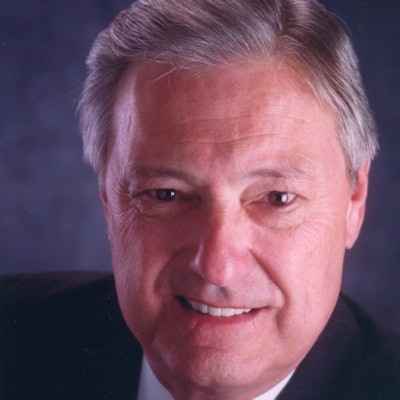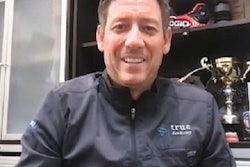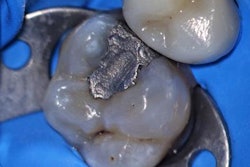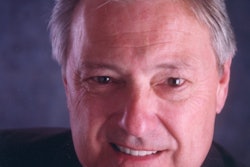
The starting point of all dental treatment is to listen to your patient's chief complaints and his or her expectations. By having a good understanding of your patient's desires, you will be able to present treatment options that will provide the desired results.
Many years ago, communication was a major problem. I was a poor communicator with the people who worked for me and with my patients. I decided that we all needed to learn to communicate with ourselves first, so we began by learning the applications of neurolinguistic programing in health-centered dentistry. We mastered these applications and, in the six-month process, became a team. We then quickly applied these principles to our communication with our patients. Basically, we had learned how to listen and ask questions.
One of the systems we developed together was the new patient interview. No more sliding glass windows or clipboards with papers to fill out. In Stephen Covey's 7 Habits of Highly Effective People, habit No. 5 is "seek first to understand, then to be understood." Using the principles of this habit, the assistant's goal is to find out all that he or she can about the patient's past dental experiences and what his or her expectations were. In the process, the assistant has begun to establish a relationship of trust with the new patient.
I also found that I was able to visualize how a patient's teeth were going to look when I was finished changing his or her smile. I could also visualize how I was going to prep the teeth in order to make that change. This allowed me to speak to the patient about the treatment with confidence.
Case study
A 40-year-old woman entered the practice as a new patient. During her new patient interview, her chief complaint was her gummy smile and the color of her teeth. She also felt that her two upper front teeth were "pushed back" and she would like her teeth to be whiter.
 The patient before treatment. All images courtesy of Dr. Joe Blaes.
The patient before treatment. All images courtesy of Dr. Joe Blaes.Upon examination, the patient's occlusion, periodontal health, and joints were all within normal limits. Both central incisors were lingually inclined and showed some incisal wear. The lateral incisors were in their proper positions. The cuspids were rotated slightly. The color of all the anterior teeth, including the bicuspids, was too dark.
After "sounding for bone" according to the research by Dr. Stephen Chu, it was established that the gingival tissue could be surgically recontoured.
After reviewing the digital radiographs and the occlusion, I determined that the upper anterior teeth could be restored with porcelain veneers, which would improve the position of the teeth and solve the color problem. The upper right first and second bicuspids both had composite restorations that needed to be replaced due to decay and marginal leakage. These teeth will be restored with inlay porcelain veneers. An upper impression was made and sent to the dental lab for a wax-up.
At the next appointment, the diagnosis and recommended treatment were thoroughly discussed with the patient and she was able to view the wax-up. She was excited and agreed to proceed with the outlined treatment. An appointment was made to begin the restorative treatment.
The patient arrived on time and was seated and made comfortable with blankets, protective glasses, lower back support, a long protective cover, lip balm, and headphones. The patient is lightly sedated with nitrous oxide for relaxation during a long procedure.
One of the problems with anterior restorations is delivering anesthetic painlessly. I have adapted an anesthesia technique developed by Dr. Larry Rosenthal that is almost painless. After the assistant places a topical anesthetic gel, give it some time to work. Then, using an extremely sharp small-gauge needle (Septoject Evolution by Septodont), raise the upper lip and stretch the tissue. Next, barely penetrate the tissue in the sulcus over the first tooth and then slowly inject anesthetic until a weal is raised. Remove the needle and place a finger on the weal and push it into the sulcus and mesially or distally toward the next tooth. Proceeding to the next tooth, do the same thing. This is done to the nine teeth we will be restoring; then the first tooth is injected with anesthetic to the apex of the tooth, as well as the remaining teeth. The patient will have great anesthesia without experiencing any pain.
Use an electrosurgical unit with a very fine needle (Colorado microdissection needle from Stryker). The microneedle is a very fine electrosurgical tip used by plastic surgeons. It will hold its shape and will not bend while cutting. The gingival tissue is removed with more control and precision while establishing the new contour. This technique is used because of studies done by Rella Christensen, PhD, RDH, and Dr. Gordon Christensen, MSD, PhD, showing that healing is faster with an electrosurgical unit.
 Precision prepping with a Bien-Air electric handpiece and protecting the tissue with the Zekrya.
Precision prepping with a Bien-Air electric handpiece and protecting the tissue with the Zekrya.Veneers are prepped with a round-ended tapering disposable diamond in a Bien-Air Evo.15 electric handpiece that provides constant power and low noise with no stalling, so teeth are cut in less time. The Bien-Air electric handpiece finishes the tooth with a more precise and smoother prep.
Recent research has shown that the water spray can be turned off on the Bien-Air electric handpiece to eliminate the aerosol. You can actually prep dry for a maximum of 20 seconds. I then lift the bur away from the prep for 10 seconds, then I continue prepping for another 20 seconds. This sequence will not damage the pulpal tissues. The head of the Bien-Air electric handpiece will not get hot because of the patented CoolTouch+ heat-arresting technology. The preps are so precise that the finished veneers actually snap into place, so there is no doubt that they have seated properly.
The best way to control tissue bleeding is to avoid cutting the tissue. Use a Zekrya instrument from DMG America to retract and protect the tissue when setting the subgingival veneer margin. Strip all interproximal margins so they are sharp.
 Matrix button from Advantage Dental Products.
Matrix button from Advantage Dental Products.A matrix was made before the appointment using the matrix button from Advantage Dental Products. The button is softened in hot water and then formed on the wax-upped model. The softened button will not melt the wax on the model. The result is a hard-plastic matrix with precise detail from the wax-up that is used for making the provisionals.
 Matrix button stent making provisionals.
Matrix button stent making provisionals.Fill the matrix with Luxatemp Ultra from DMG America, keeping the mixing tip in the flowable material as you dispense it. The matrix is seated over the prepared teeth and left to set up for five minutes. The hard-plastic matrix will only seat in the correct position. I do not remove the provisionals/temporaries from the teeth. I leave the provisionals in place using the undercuts to secure them in place. I gently tease with a rocking motion and only remove the matrix. All excess bis-acyl material is removed, and the margins are trimmed with SS White Safe End Series carbide burs; I use the SE4-20 or SE6-20 bladed finishing burs that will not cut the tissue. The provisionals are not removed and are secured by material that has come through the contacts on the lingual. The bite is checked, and any high spots are adjusted.
These esthetic provisionals come very close to an exact replica of your final restorations. This gives your patient an opportunity to check out size, shape, length, speech, and overall looks. Another appointment is scheduled in a few days for feedback from the patient. Changes are made for the patient; when he or she is satisfied, take an impression to send to the lab to give it the critical tooth shape and length.
All of this requires an extremely close relationship with an experienced esthetic ceramist. Porcelain veneers are an art form, and we are very reliant on our ceramist to create the real esthetics that we wish to achieve and that our patients desire. The need for an excellent esthetic ceramist cannot be understated. Any dentist who wants to place porcelain veneers needs to research and develop a great relationship with an artistic ceramist if they want to have patients rave about their new smiles. My artistic ceramist for the past 30 years is David Block, CDT, the owner of Aesthetic Porcelain Studio in Los Angeles.
Once the veneers have arrived, the patient is anesthetized and the provisionals are carefully removed by cutting them apart. The veneers are tried in and checked for proper seating. The bicuspids are cemented first using a self-curing resin cement. The excess cement is cleaned, and the bite is checked. The veneers will be cemented with a light-cured cement. They will be cured with two curing lights from the facial and the lingual.
Any adjustments will be made with fine diamonds and then polished with the Brasseler Dialite system. Be certain that any porcelain that was adjusted is well polished because the patient's tongue will quickly find any areas that were missed.
 New smile with veneers.
New smile with veneers.It's celebration time! The patient is asked to stand in front of a wall-mounted mirror to have a look. We have prearranged to have as many of the team members who are available to join the celebration of a new smile with a lot of oohs and ahs. This is what makes dentistry rewarding and fun.
Dr. Joe Blaes created a unique, insurance-free, fee-for-service general practice in St. Louis that emphasizes preventive, esthetic, reconstructive, and implant dentistry. He is best known as the former chief editor of Dental Economics. Blaes is a fellow of the American College of Dentists, a past president of the American Academy of Dental Practice Administration, and a founding member of the American Academy for Oral Systemic Health. He can be reached at [email protected].
The comments and observations expressed herein do not necessarily reflect the opinions of DrBicuspid.com, nor should they be construed as an endorsement or admonishment of any particular idea, vendor, or organization.



















